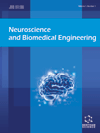- Home
- A-Z Publications
- Neuroscience and Biomedical Engineering (Discontinued)
- Previous Issues
- Volume 5, Issue 2, 2017
Neuroscience and Biomedical Engineering (Discontinued) - Volume 5, Issue 2, 2017
Volume 5, Issue 2, 2017
-
-
Current Screening Tests and Novel Early Detection Approaches for Alzheimer's Disease
More LessAuthors: Mohd U. Syafiq, Jiajia Yang, Yinghua Yu and Jinglong WuBrief cognitive screening tests performed by primary care physicians provide effective information for Alzheimer's patients and families regarding recent changes in daily living, behavior, intellectual functioning, and mood. In this review, we consider information in the literature concerning the practicality and accuracy of brief cognitive screening instruments currently utilized in primary care. Nine brief screening tests met our in Read More
-
-
-
Mechanical Evaluation of Osteonecrosis of Femoral Head Preand Post-Medical Treatment: Patient-Specific Computations
More LessAuthors: Qi Tang, Haijun He, Yue Yue, Zhaotong Zhang, Weiheng Chen and Duanduan ChenBackground: Osteonecrosis of the femoral head (ONFH) is a severe bone disease that may induce bone collapse. Early-stage ONFH (ARCO I-II) commonly involves conservative treatment. Evaluation of the treatment effects mainly relies on medical scans, which can provide morphologic information of the bone, but, there is lack of presentations of mechanical capabilities. Objective: The current study aims to propose mec Read More
-
-
-
Visual Motion Processing Areas in the Human Brain Based on a Wide-Field Retinotopic Mapping Technique
More LessAuthors: Miaomiao Liu, Guangying Pei, Ruolan Bai, Nan Mu, Xiaoshan Bi, Wenhui Wang, Bin Wang, Jinglong Wu, Qiyong Guo and Tianyi YanIntroduction: The wide-field visual cortex, known as MT+/V5 and V6 plays a major role in the visual processing of motion in the brain. In the current study, we located the MT+/V5 complex, which was divided into three sub-regions: the middle temporal (MT) area for central stimuli and the medial superior temporal (MST) area and V6 for peripheral stimuli. Previous studies of these areas were typically limited to the central (eccentri Read More
-
-
-
The Effects of the Red-Green and Blue-Yellow Pathways on Audiovisual Integration
More LessAuthors: Dandan Li, Bin Wang, Ting Li, Jie Xiang and Haifang LiBackground: The integration of sound and visual information is an essential component of cognition. It has been proved that sound and visual stimuli features play key roles in the audiovisual integration.With regard to the color perception in visual stimuli, there are two cone pathways: a red-green and a blue-yellow at the level of the retina and the lateral geniculate nucleus. However, the effects of two color pathways on t Read More
-
-
-
Differences in Corticomotor Excitability Between Hemispheres Following Performance of a Novel Motor Training Task
More LessAuthors: Luc Holland, Bernadette Murphy, Steve Passmore and Paul YielderBackground: Past studies of neurophysiological differences between the dominant (dM1) and non-dominant (NdM1) motor hemispheres in response to motor training have had equivocal results, possibly due to a lack of training task novelty. Understanding differences between brain hemispheres in the capacity for neural plasticity in response to motor learning is important for rehabilitation and occupational settings. Objective: Our Read More
-
-
-
Inter- and Intrahemispheric Coherence of Electroencephalography Peaks in Children with Autism
More LessAuthors: Alvin Sahroni, Tomohiko Igasaki, Nobuki Murayama and YudiyantaBackground: Studies of autistic populations have reported several findings related to the brain pathophysiology of autism, but knowledge of the brain characteristics of younger children with autism remains limited, especially for uncooperative children. Objective: To characterize inter- and intrahemispheric brain activity in children with autism and children with Typical Development (TD) using Electroencephalogram (EEG) re Read More
-
-
-
Bigger Influence by Smaller Particles in Tactile-Visual Cross-Modal Roughness Perception of Fine Surface
More LessAuthors: Mohd U. Syafiq, Jiajia Yang, Yinghua Yu and Jinglong WuBackground: Cognition of surface roughness at the same time by the two senses (tactile and visual) is still undeclared, and how both effects on each other could be intriguing. The main factor for roughness estimation of fine surface (spatial features below 200 μm) is also unknown until present. Objective: In order to see the difference between cognition of both condition, we conducted two unimodal and two bimodal tas Read More
-
Volumes & issues
Most Read This Month
Article
content/journals/nbe
Journal
10
5
false
en


